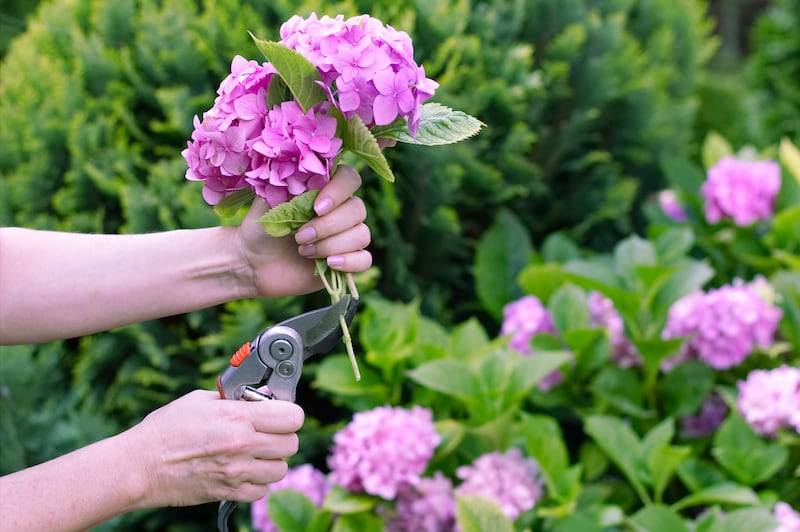Q: How do I prune a hydrangea?
LD, Co Wexford
A: A large, versatile and very fashionable genus of mainly deciduous flowering shrubs, hydrangeas are wonderful for adding long-lasting colour to the garden from summer right through into late autumn. They also appreciate our cool, damp climate, especially the two groups known as lace caps and mopheads (varieties of Hydrangea macrophylla) which can often be seen flowering their hearts out in mild seaside gardens, where annual rainfall amounts are high and harsh frosts are a rarity.
Other well-known garden-worthy species of hydrangea often seen growing in Irish gardens include Hydrangea paniculata (also known as the paniculate hydrangea, this species will tolerate drier growing conditions); Hydrangea quercifolia, also known as the oak-leaved hydrangea; Hydrangea arborescens (the species to which the eternally popular Hydrangea ‘Annebelle belongs’); the tender but exquisite Hydrangea aspera (Villosa Group) known for its velvety foliage and violet-coloured bee-friendly blooms; Hydrangea petiolaris, a slow-growing but very statuesque white-flowering climbing shrub that’s ideal for a shady wall; and the evergreen Hydrangea seemannii, another gorgeous climbing hydrangea that’s best suited to a sheltered, shady spot in a mild garden against a wall.
READ MORE
Confusing as it is (and it really is), it’s important to note that not all of these different species are pruned in exactly the same way. Mopheads, for example, should be gently deadheaded in spring by very lightly pruning the old flowering shoots back down to just above a strong pair of side buds. But just make sure to leave any of the new young shoots with large fat buds at their tips untouched as these contain this year’s flower buds. If the plant is old and very overgrown, cut a few of the oldest, thickest, woodiest stems back down to the base.
Unlike mopheads, lacecaps should be lightly deadheaded in late summer after flowering to prevent them setting seed. In this case, use a sharp secateurs to cut the old flowering stems back to the second set of leaves below each faded flower.
Varieties of Hydrangea paniculata (for example, the lovely ‘Limelight’) and Hydrangea arborescens (for example, the eternally popular ‘Annabelle’) should be pruned annually in spring to create a low framework of branches 25-60cm high.

But varieties of Hydrangea aspera (Villosa Group) and Hydrangea quercifolia need minimal pruning, again in spring, just to remove any dead, damaged or overly long branches. Hydrangea petiolaris and Hydrangea seemannii also need only a light pruning, but in summer, immediately after flowering and only to shorten the length of any overlong shoots.
As regards any species of hydrangea that should be pruned in spring, resist the urge to prune too early in the year as this will produce lots of young, soft, early growth that’s then vulnerable to damage from late frosts. Don’t prune too hard either as this will reduce the display of flowers.
After you’ve finished pruning, remove all the pruned material along with any weeds growing around the base of the plant. Only sprinkle a slow-release fertiliser around the roots if the soil is thin and sandy (avoid feeding plants growing in heavier soils as this can cause too much leafy growth at the expense of their beautiful flowers). But do mulch the soil to lock in moisture and protect these thirsty plants from drought.















